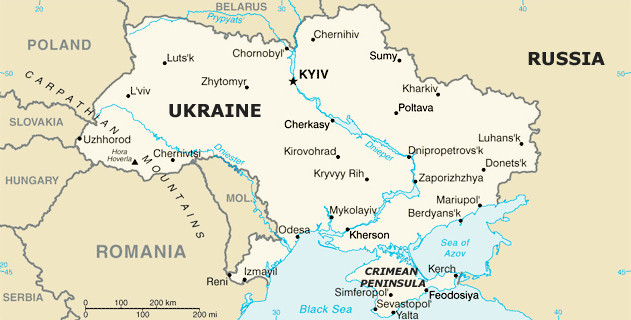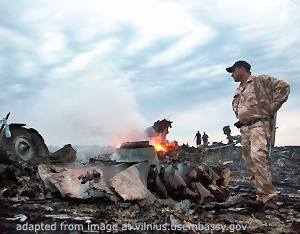After Ukraine-Russia Prisoner Swap, Can Zelenskiy Capitalize On Momentum?

(Article text ©2019 RFE/RL, Inc., Radio Free Europe/Radio Liberty – rferl.org – Christopher Miller- KYIV, Sept. 7, 2019 – article text also appeared at rferl.org/a/after-ukraine-russia-prisoner-swap-can-zelenskiy-capitalize-on-momentum-/30151851.html)
“Our guys are home.”
As those words were shared by President Volodymyr Zelenskiy on September 7, the Ukrainian nation simultaneously celebrated and breathed a collective sigh of relief upon learning that 35 of their compatriots who had been imprisoned in Russia — some for several years — were back on their native soil.
At Kyiv’s Boryspil International Airport, where a plane adorned with the blue-and-yellow national flag delivered them to safety from Moscow, family members could not hold back their emotions.
One by one, they rushed to their newly freed loved ones, wrapping them in their arms and showering them in tears. Children of the former detainees nearly knocked their fathers off their feet as they ran to hug them.
Zelenskiy stood at the foot of the stairs as each man exited, greeting them with handshakes.
Surrounding them all were dozens of cameras and reporters eager to capture the moment and even a selfie with men whose faces have adorned their front pages.
It was a monumental and emotional end to intense behind-the-scenes negotiations between Kyiv and Moscow that was years in the making.
In all, 35 Ukrainians were released by Russia and brought to Kyiv. They included the 24 sailors detained by Russia near the Kerch Strait in November 2018 and several high-profile figures, including filmmaker Oleh Sentsov and journalist Roman Sushchenko.
In exchange, Moscow received 22 Ukrainians, 12 Russians, and one Moldovan from the Kyiv side. Perhaps most notable among the group was Russian state news reporter Kirill Vyshinsky.
A Win For Zelenskiy
The successful swap is a political victory for Zelenskiy, a former comedian who has been in office for less than four months.
For Ukraine-Russia relations, the exchange marked the first bright spot in years and boosted hope that it may open a path for further progress toward resolving the war in eastern Ukraine that has killed more than 13,000 people and torn the country apart.
Despite — or perhaps because of — his lack of experience, the new Ukrainian leader was able to quickly deliver on his campaign promise to return the group of Ukrainians by showing flexibility.
Since coming to power, Zelenskiy has restarted dialogue with Putin, believing that communication is key to repairing frayed relations between the two countries. “We have agreed on the first stage of unblocking our dialogue and the first stage of ending the war, the return of our military, sailors, our territories,” Zelenskiy said on the tarmac.
He and Putin have not yet met in person but have spoken by phone several times, most recently in the hours before the prisoner exchange, Zelenskiy said.
The challenge for him now will be to build on this momentum.
… But Some Might See Him As Soft
In doing so, he will need to be careful. Zelenskiy may see a bump in his already record-high 70 percent approval rating after the return of the 35 Ukrainians, but there is also risk for the inexperienced president.
If he looks like he is giving up too much, critics could see him as being soft on Russia and too willing to compromise with Putin.
There is a vocal minority in the country who preferred the tactics of his predecessor, Petro Poroshenko, who refused to back down and negotiated two big prisoner exchanges with Russia before negotiations stalled, apparently because neither he nor Putin was willing to compromise.
Putin Also Wins
Zelenskiy also cannot allow for Putin to look like the bigger winner.
Ukraine looks like the one that came out on top with the swap, but it is also a victory for Putin, who has been pressured by Western governments to cease his aggressive posture toward Ukraine, pull forces out of the country’s east, return the annexed Crimean Peninsula, and work with Zelenskiy to make peace.
Those governments have sanctioned dozens of Russian government officials and entities, a squeeze that has taken a toll on Russia’s economy. That is likely to have factored into Putin’s decision to allow the exchange to go through. He may feel this exchange puts him in a good position to ease Western pressure on Russia.
The Swap Almost Didn’t Happen
Underscoring how much power Putin still wields over Zelenskiy is the fact that it only happened because the latter agreed to the Russian leader’s demand to include Ukrainian Volodymyr Tsemakh. This was confirmed by Zelenskiy and the head of the Ukrainian Security Service (SBU), Ivan Bakanov.
 Tsemakh, a 58-year-old former pro-Russian separatist who commanded an air-defense unit in eastern Ukraine, is a “person of interest” in the July 2014 shoot-down of Malaysia Airlines flight MH17. He was detained by the SBU during a secret operation deep behind separatist lines in June.
Tsemakh, a 58-year-old former pro-Russian separatist who commanded an air-defense unit in eastern Ukraine, is a “person of interest” in the July 2014 shoot-down of Malaysia Airlines flight MH17. He was detained by the SBU during a secret operation deep behind separatist lines in June.
The Dutch-led Joint Investigation Team (JIT) in charge of the MH17 probe, as well as 40 members of the European Parliament, urged Ukraine not to hand him over to Russia, saying they saw him as being a potentially important figure to have in custody.
In the end, they managed to interview him “for hours” and on more than one occasion, Zelenskiy said.
But including him in the exchange was the only way to ensure it happened, the president added.
“It was a difficult decision,” Zelenskiy said regarding Tsemakh. “I was afraid that because of him the exchange might fall through.”
